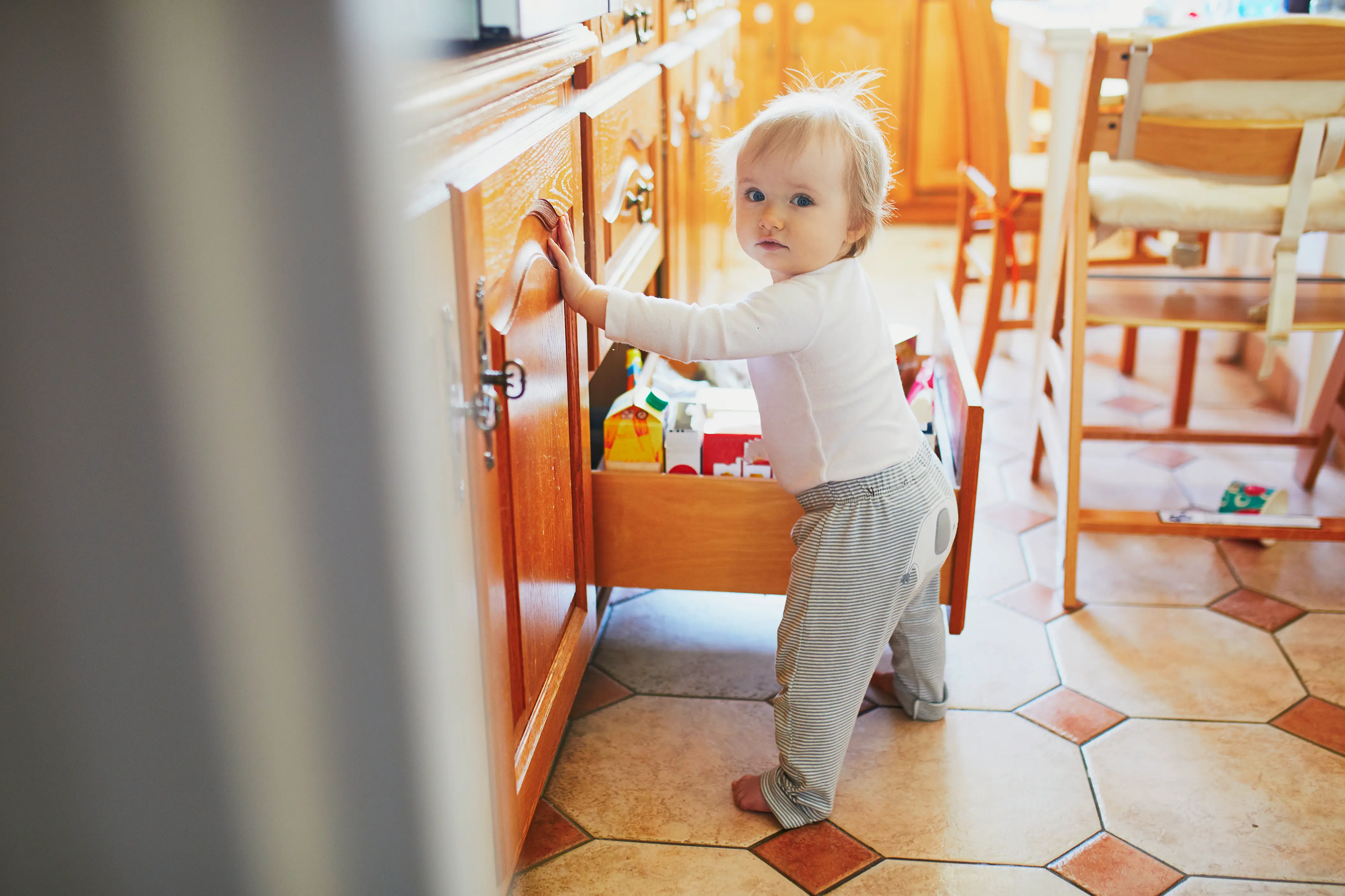Babyproofing your home is a great way to ensure that your youngest family member stays safe from potential hazards. They’ll grow up healthy and happy, and you won’t have to worry about them accidentally hurting themselves or coming into contact with poisonous products. We know how overwhelming it can be at first, so we’ve put together this list of baby-proofing tips that will help you stay on top of things!
1) Put safety plugs in receptacles and light switches for little fingers.
2) Always plug electrical cords into outlets, even if the appliance is unplugged.
3) Use furniture corner and edge guards to prevent bumps and bruises from sharp edges.
4) Put safety latches on cabinets and drawers to keep them from sliding open.
5) Never place electrical appliances such as extension cords or power strips in a location where your child can reach them. Only use outlets that are easily accessible to you at all times when putting these items in an outlet.
6) Make sure that all windows and balconies in your home are properly secured to prevent your child from falling out of them or getting their head stuck between the window and the frame.
7) Use safety harnesses for little ones that are in car seats, high chairs, and swings.
8 ) Keep sharp knives and scissors locked up. Never leave them in a place where they can be easily accessed by children under the age of 5. Children do not have the fine motor skills to use these tools properly, which could lead to accidents and cuts. Never leave these items unattended with young children as well!
9) When possible, cover dangerous electrical appliances in baby-proof cases that prevent little hands from reaching them.
10) Use safety gates to block off any staircases that you aren’t using, and be sure to use the gate whenever you step away from your baby.
11) Keep chemicals such as cleaning products, solvents, and detergents out of the reach of children. Common items such as cleaning products should never be left unattended within the reach of your child. You will also need to ensure that older siblings and family members know to keep their things away from your baby at all times!
12) Make sure that all medicines are kept out of reach as well. Never keep loose pills in a medicine bottle on a shelf or in open containers in a bathroom cabinet either. Always use child-proof caps and store them in a locked cabinet or drawer.
13) Keep any area in your home free of small toys and other dangerous objects such as tacks so that there is less risk of them being stepped on or getting stuck in feet or hands.
14) If buying a used crib or changing table, make sure it meets current safety requirements. Do not use any item that you are not sure of its history. You can check for yourself to see if it is still safe by looking at the label or by going online.
15) Make sure that all the outlets in your house are GFCI protected before you bring your child home.
16) Do not place baby powder, lotion, or other similar products around your baby. This could cause them to accidentally ingest dangerous chemicals and become ill as a result of them.
17) Install a fire extinguisher in an easily accessible location in case of a fire emergency.
18) ) Install outlet protector covers in every room of your house that has outlets for corded electrical devices such as a vacuum cleaner or lamp.
19) Do not leave your child in the bathtub unsupervised. It’s very easy for toddlers to slip and fall in tubs. Never leave any water in the tub when it is not being used until your child is able to walk on their own and you are confident that they won’t try to climb in.
20) Avoid storage spaces above your child’s head such as over the bed, dresser, and toy chest. They could fall and get hurt or hit their heads on the ceiling if they are moved while sleeping.
21) If you have a baby, make sure that blankets and pillows do not pose a suffocation risk.
22) Install smoke detectors in every room of your house. Test them monthly to ensure that they are still working properly. You can read more about them in our article about home safety.
23) Keep stair railings and banisters free of bumps and holes so that they will be easier for your child to hold onto when walking upstairs on their own.
24) Never place any electrical cord, wire, or rope low enough for your child to trip over it or get caught on it while walking around the house.
25) Always try to use breakable items like glass bottles, dishes, and decorative items only when you are near them or if they will be out of reach of your child at all times. This will help prevent injury in the event that your child finds it and starts playing with it.
Finally, it’s important to remember that safety is always the top priority. If something does not seem safe, don’t use it! Only use items that you are sure are safe for your child to be around. If there is ever any question about a product you are using or downgrading, contact your pediatrician and do thorough research to ensure that it is safe for your baby.

